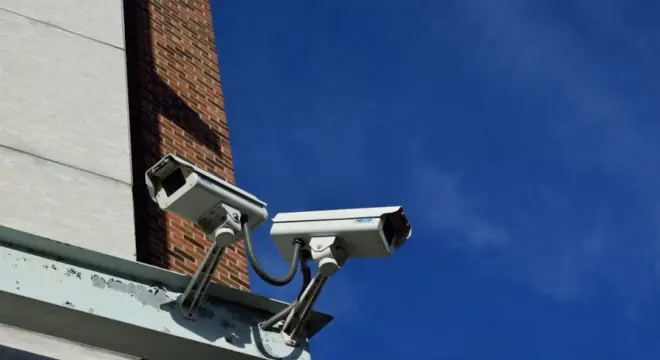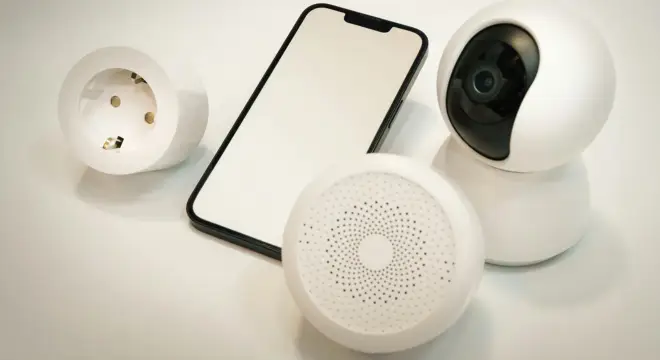10 Smart Ways to Protect Your Home from Break-Ins (That Actually Work)
You can own the nicest house on the block — solid doors, pretty lights, even a friendly dog in the yard — and still be wide open to a break-in. Most homeowners don’t realize how exposed they are until something goes wrong. By then, it’s too late.
I’ve worked with dozens of families who thought a simple lock or a loud alarm was enough. It’s not. Real home security isn’t one thing — it’s a layered system of small, smart choices that work together. You don’t need to spend a fortune or turn your house into a fortress. But you do need to stop thinking like a homeowner… and start thinking like a burglar.
This guide isn’t just a list of obvious tips — it’s a strategy. One that’s backed by hard data, real-life behavior patterns, and the kind of insights you won’t find in cookie-cutter blogs. If you want to protect your home like a pro, here’s where to start.
Why Your Home Isn’t as Safe as You Think (And What the Stats Say)
Let me be straight with you — most people think their home is secure because they lock their doors at night. But the truth? That’s not even the bare minimum anymore.
According to ADT, a home burglary happens every 26 seconds in the U.S. That’s more than two per minute. And most of these break-ins happen during the day, when you’re likely at work or out running errands. The average loss? Around $2,800 per incident — not to mention the emotional punch that comes with knowing someone was inside your space.
And it’s not just about stolen things. As reported by SafeHome.org, 48% of violent crimes happen inside homes. That’s not a scare tactic — that’s data. Yet despite all this, only about one in three homeowners has a security system installed.
I get it. Installing a camera or setting up a smart lock doesn’t feel urgent — until it’s too late. Most burglars don’t even “plan” much. They’re opportunists. They walk your street, look for signs of weakness — maybe a dark home, no cameras, packages at the door — and just go for it. It takes them under 12 minutes on average to get in and out.
Still think your old lock is enough? For a deeper dive into why basic precautions often fall short, check out 9 Home Security Tips Every Homeowner Should Know Before It’s Too Late. You might be surprised how many vulnerabilities go unnoticed.
Here’s the deal: if you want real peace of mind, you need to understand how break-ins happen — and more importantly, what simple steps actually work to stop them. That’s what this guide is for.
So before we jump into the top 10 security moves, ask yourself — if someone was watching your home right now, what would they see?
Know the Intruder’s Mindset (So You Can Outsmart Them)
Most break-ins don’t happen at night, in the rain, with ski masks and glass cutters. That’s movie stuff. Real burglars? They’re usually just people walking or driving through your neighborhood in broad daylight, looking for low-hanging fruit.
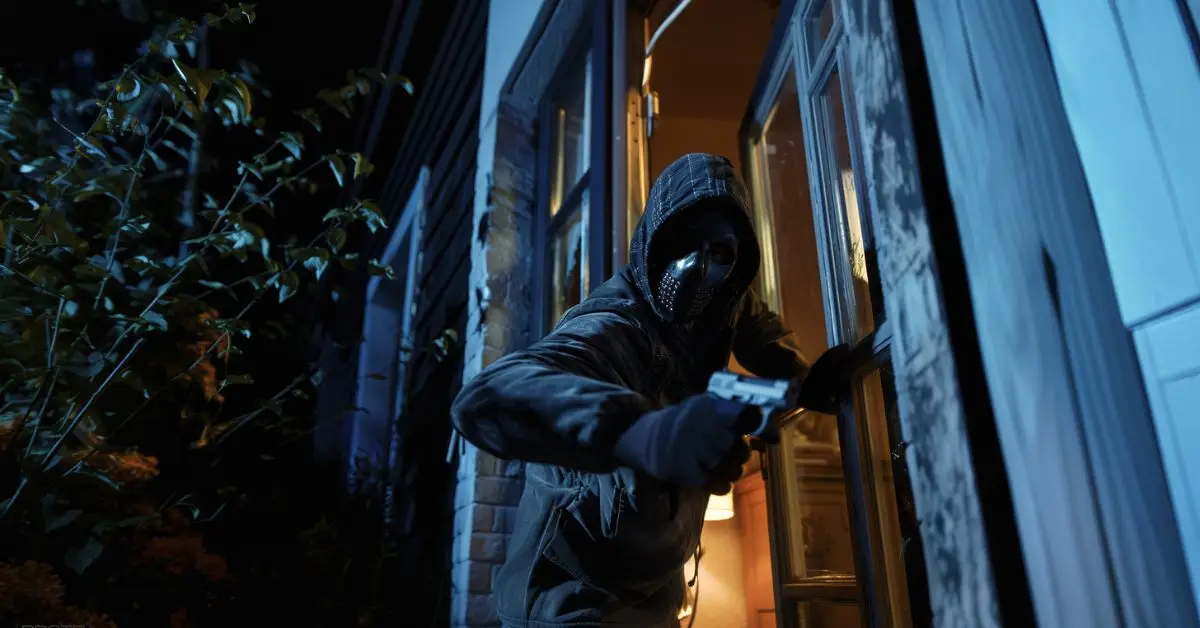
They don’t need advanced tools. A crowbar, a screwdriver, or even just an unlocked door will do. About 79% of burglars enter through the front door, back door, or first-floor windows. And they’re not wasting time. The average burglar is in and out in less than 12 minutes.
What’s even more surprising? A lot of them live nearby.
Criminals tend to target homes close to where they live because they already know the rhythms — when people go to work, which homes look empty, which ones have a camera or not. That’s why visibility matters more than gadgets. Even a cheap motion light or a fake camera can make someone skip your house and move on.
But here’s where most people slip up: they overshare online.
If your Instagram has a tagged location saying “out of town for the week” or your front porch is all over your real estate listing — you’re basically sending out invitations. Burglars actively scan social media for vacation posts, open house ads, and home layout videos.
I’ve seen people post their Airbnb listing with every single room angle visible. That’s great for guests — and burglars.
So if you’re serious about security, start thinking like an intruder:
- What does your home look like from the street?
- Are you making it obvious when you’re away?
- Are you posting your location in real time?
Burglars aren’t always smarter than you — but they’re watching when you’re not.
The 10 Security Moves Every Homeowner Should Make
There’s no one-size-fits-all fix for home protection — but there are 10 moves that close most of the gaps burglars look for. Stack even a few of these, and you’ll be far better protected than the average homeowner.
1. Upgrade Your Front and Back Door Locks
Most break-ins still happen through the door. And no, that basic store-bought lock isn’t cutting it.
Go for ANSI Grade 1 deadbolts, reinforced strike plates, and solid-core doors. In the UK, make sure your locks meet BS3621 standards.
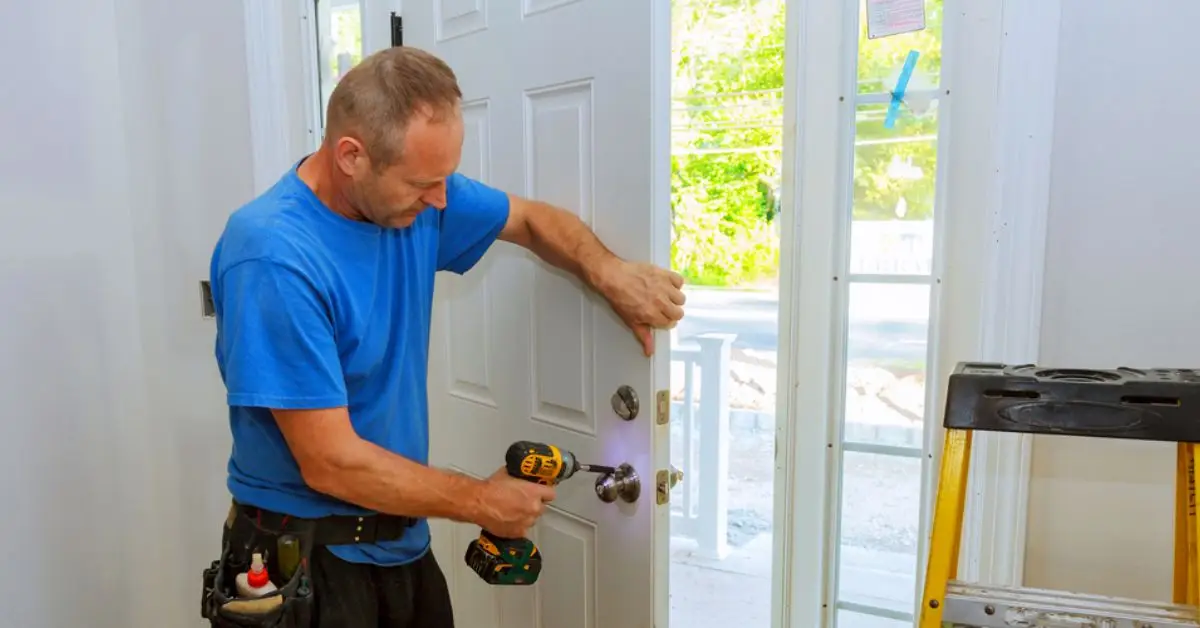
Also consider a smart lock with remote access so you can lock or check from anywhere.
Why this matters: Most burglars enter through the path of least resistance — a weak or unlocked door.
2. Use Visible Cameras and Smart Doorbells
Burglars avoid homes with visible cameras — plain and simple. Whether it’s a basic CCTV setup or a smart doorbell like Ring, visibility is your first line of defense.
60% of burglars skip homes with cameras or surveillance signs.
Why this matters: No one wants to be caught on video. Visibility alone can stop a break-in.
3. Install Motion-Activated Lights (Front and Back)
Dark corners are a burglar’s best friend. Motion-activated lights suddenly flip the power dynamic.
Install solar or plug-in models near entry points, walkways, backyards, and garage areas.
Why this matters: Lighting disrupts stealth and makes the home feel actively protected.
4. Simulate Occupancy with Smart Lights
An empty-looking home is an easy target. Use smart plugs or light schedules to create movement inside — especially when you’re away.
Apps like Kasa or Philips Hue allow remote and randomized lighting routines.
Why this matters: Burglars want predictability. Light patterns suggest presence.
5. Lock Your Garage and Secure What’s Inside
Garages are a common weak spot. Side doors, openers, and even unlocked entry into the home all make this an easy access point.
Reinforce side entries, disable the emergency release when away, and always lock the garage-to-house door. Keep valuables out of plain sight.
Why this matters: If they get into your garage, they often get into your house next.
6. Use a Monitored Security System
You don’t need a high-end system to be protected. Brands like SimpliSafe and Cove offer solid, affordable setups with professional monitoring.
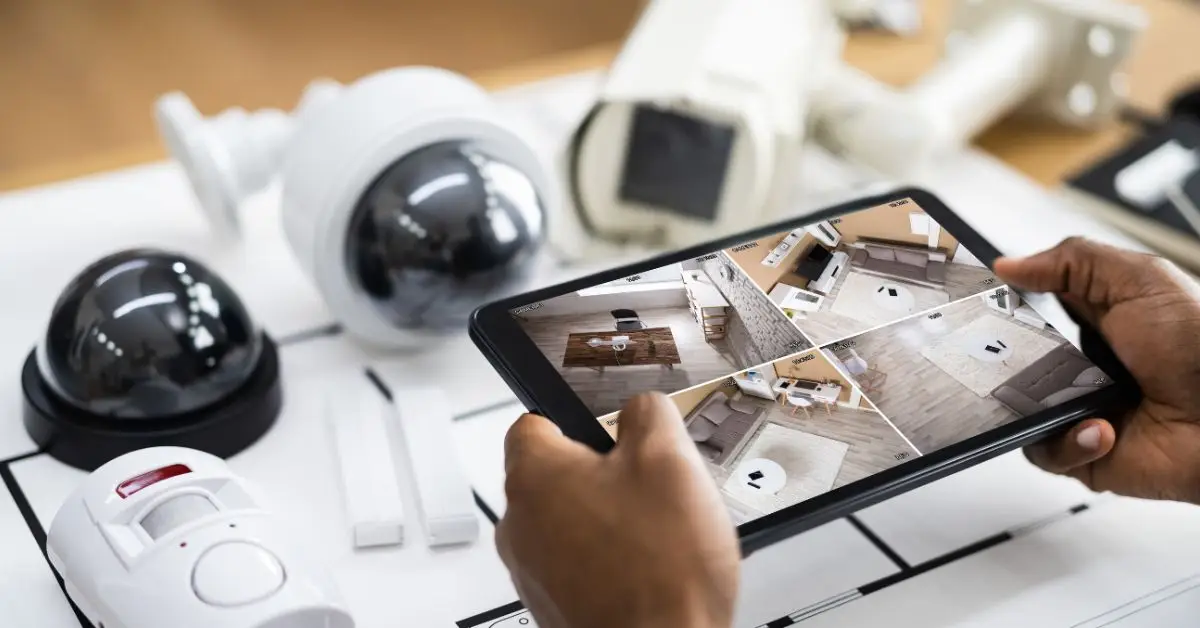
According to Deep Sentinel, homes without security systems are three times more likely to be broken into. Not ready for a pro system yet? Start with DIY home security systems that work without breaking the bank, including options you can install yourself in under an hour.
Why this matters: Monitoring adds pressure and triggers real-time responses.
7. Protect Your Wi-Fi and Smart Devices
If your home is “smart,” your network becomes part of your security system. Rename your router, hide your SSID, and use strong, unique passwords.
Set up guest networks and avoid using the same password across devices.
Why this matters: Weak networks can let hackers disable smart cameras or alarms.
8. Stop Oversharing on Social Media
Real burglars browse real social feeds. If you’re posting vacation updates, open house tours, or location-tagged selfies, you’re giving away your absence.
Why this matters: You might trust your audience — but your data is more public than you think.
9. Hide the Signs of Big Purchases
Boxes from new TVs, gaming systems, or laptops sitting on the curb? That’s an ad for what’s inside.
Break them down privately or drop them off directly at a recycling center. Also, avoid leaving parcels unattended — use lockers or trusted neighbors.
Why this matters: You’re unintentionally revealing your valuables.
10. Get to Know Your Neighbors
You don’t need to be best friends. But a basic level of neighborhood awareness goes a long way.
Join a local watch group or create a WhatsApp loop. Programs like Operation Identification also help you tag and register valuables in case of theft.
Why this matters: A connected street deters strangers and helps catch problems early.
Security isn’t just gear — it’s behavior. These 10 moves won’t just protect your stuff. They’ll give you something better: peace of mind.
What Most Articles Miss (And You Won’t)
Most blogs on home security repeat the same checklist: get a camera, install a light, buy an alarm. That advice isn’t wrong — it’s just incomplete.
If you’ve read a few guides already, you’ll notice the pattern. They focus mostly on physical entry and visible deterrents. But in the real world, burglars and opportunistic thieves are getting smarter — not just physically, but digitally and socially.
Here’s what’s usually missing, and why you’ll get the full picture here:
They Ignore Social Engineering
Most articles don’t talk about how burglars use your online behavior against you. Real-world break-ins are often planned based on what you post, where you tag yourself, and how your home looks online.
According to Insight Security, burglars use Instagram, Facebook Marketplace, and real estate listings to identify vulnerable homes. It’s part of a growing trend — learn more about how AI-powered scams are becoming part of modern burglary tactics and why digital behavior is now a key target for modern thieves.
A photo showing your new 75-inch TV, wide-open windows, and the fact that you’re “away for the weekend” is more useful to a thief than a lockpick.
They Skip Over Network Security
Smart homes need smart networks — yet most guides say nothing about Wi-Fi hygiene. If someone can hack into your network, they can disable alarms, unlock doors, or spy on you through indoor cameras.
This guide includes basic digital safety like renaming routers, hiding SSIDs, creating guest networks, and using strong passwords. Because security isn’t just physical anymore — it’s digital.
They Don’t Help You Prioritize
Security checklists are often overwhelming: 30 tips, all with equal weight, no clear place to begin. That’s paralyzing.
In the next section, you’ll get a 30-day action plan — broken into phases: “Do This Today,” “This Week,” and “This Month.” That way, you can actually take action instead of bookmarking another list you’ll never come back to.
They Assume Everyone Has a Big Budget
Many security guides push expensive setups: full surveillance systems, pro-installed alarms, gated driveways.
But here, you’ll also find low-cost or DIY options: fake cameras that still work as deterrents, solar motion lights, Amazon lockers, and privacy-first social habits that cost nothing but make a huge difference.
They Don’t Talk About Mindset
Security isn’t about fear. It’s about being proactive. This article is written to help you think like a burglar, not just throw gadgets at the problem.
Because when you start looking at your house the way a thief would, you’ll naturally make better decisions — and you’ll stop relying on false security from one locked door.
Your 30-Day Home Security Action Plan
Knowing what to do is one thing. Actually doing it — that’s where most people stop short.
Here’s the problem: a lot of home security advice throws 20 things at you with zero context. And let’s be honest — no one’s going to install a full system, wire the whole house, buy new locks, and research Wi-Fi protocols all in one afternoon.
That’s why I’ve broken it down into a 30-day plan. No pressure. No tech jargon. Just small wins, one step at a time.
Day 1–3: Quick Wins You Can Do Right Now
- Walk around your home at night. Look for dark spots, blind corners, and visible entry points.
- Lock all side gates, windows, garage doors, and storage areas.
- Test every lock. If any feel loose, wobbly, or cheap — flag them for replacement.
- If you’ve posted vacation plans online recently, delete or archive those posts.
- Break down and hide any electronics boxes sitting by the curb.
These are the basics — low-cost, zero-tech, high-impact.
Day 4–10: Layer in Smart Deterrents
- Install motion-activated lights outside (front porch, back door, garage).
- Add dummy or real cameras in visible locations — especially facing entry points.
- Set up smart light timers inside. Start with a plug-in timer if needed.
- Change your Wi-Fi password and hide your SSID.
- Rename your Wi-Fi from something like “SmithFamilyWiFi” to something unrecognizable.
This stage adds presence and unpredictability — two things burglars hate.
Day 11–20: Strengthen Physical Entry
- Replace weak or old deadbolts with ANSI Grade 1 locks.
- Reinforce doorframes and strike plates with longer screws and steel plates.
- Install a smart doorbell with app notifications.
- Add window locks or pins on any sliding windows.
- Walk your garage setup: disable automatic opener access if traveling, and secure inside doors.
This is where you harden your perimeter — especially the doors and garage.
Day 21–30: Build Long-Term Habits and Community
- Introduce yourself to neighbors if you haven’t already. Tell them when you’ll be away.
- Start or join a neighborhood watch or WhatsApp alert group.
- Register valuable items with serial numbers or consider Operation Identification.
- Set calendar reminders to test alarms, change Wi-Fi passwords, and check locks monthly.
- Talk to your family or roommates about smart habits — like not oversharing online.
By now, your home has visible defenses, digital privacy, and local support. That’s more than most.
Security isn’t about checking a box. It’s about building a mindset — and giving yourself real control over your space.
And if you’ve made it this far? You’re already 10 steps ahead of most homeowners.
Your Security Is Built, Not Bought
You don’t need to live in fear. You just need to stop leaving your home on autopilot.
The truth is, most break-ins aren’t masterminded. They’re opportunistic. And that means the small things you do — a better lock, a light left on, a neighbor who knows your name — make a real difference.
You’ve now got more than just “tips.” You’ve got:
- A layered security strategy
- A 30-day plan that’s doable
- Real-world insights from people who’ve been there
- Gaps in protection that most guides ignore
So here’s what I recommend: pick one thing from today’s list and do it in the next 10 minutes. Seriously — change one password, check one lock, or delete one vacation post. Then come back and take the next step tomorrow.
Security isn’t about perfection. It’s about momentum.
What’s your weak spot?
Tell me one thing you’re going to fix this week — front door, Wi-Fi, or garage? I’d love to hear how you’re making your home smarter and safer.
Let’s keep the conversation real and useful.
Disclaimer: This article is for informational purposes only and does not constitute professional security advice. Always consult licensed professionals for home security installations or legal guidance specific to your area.

